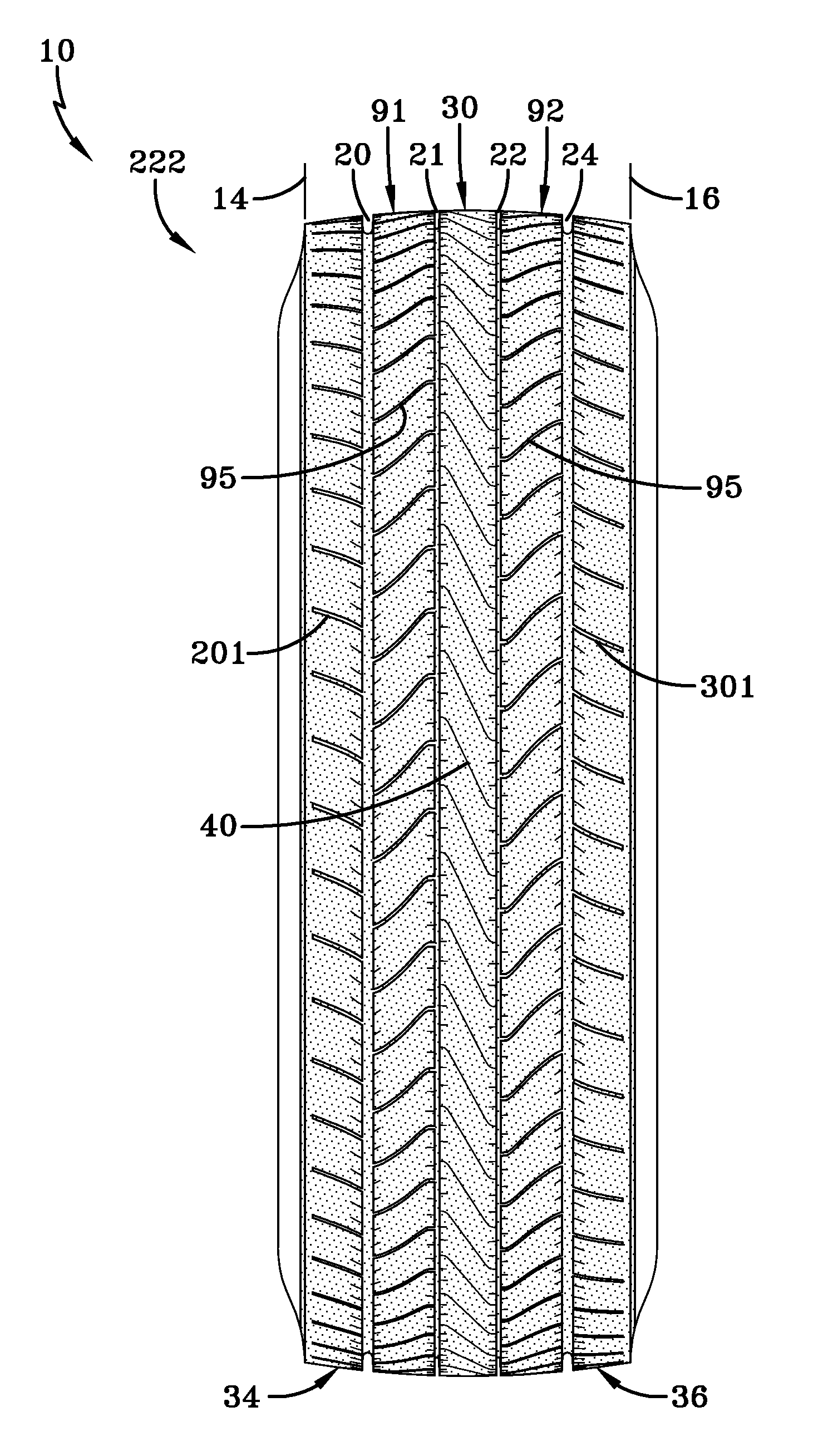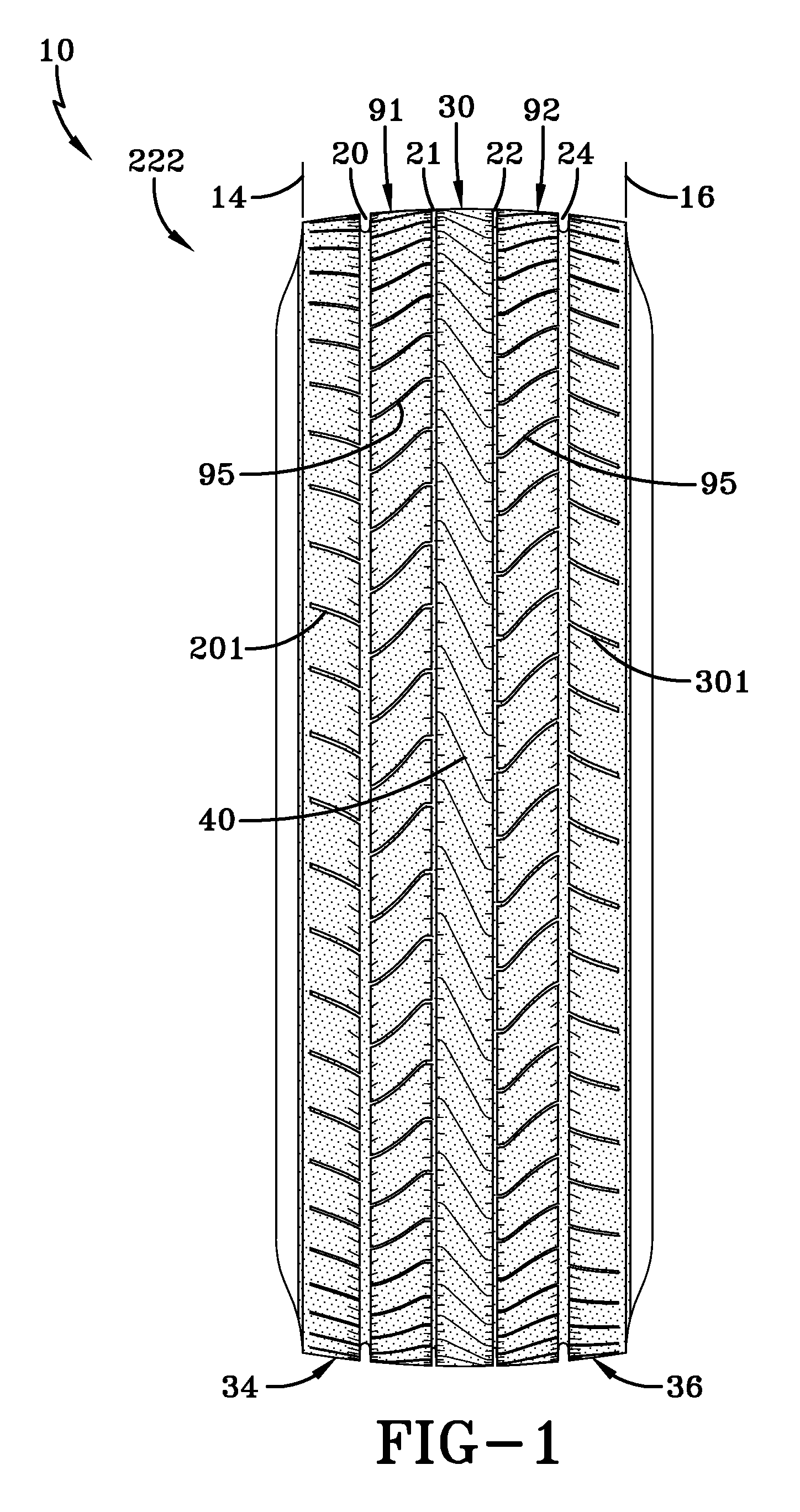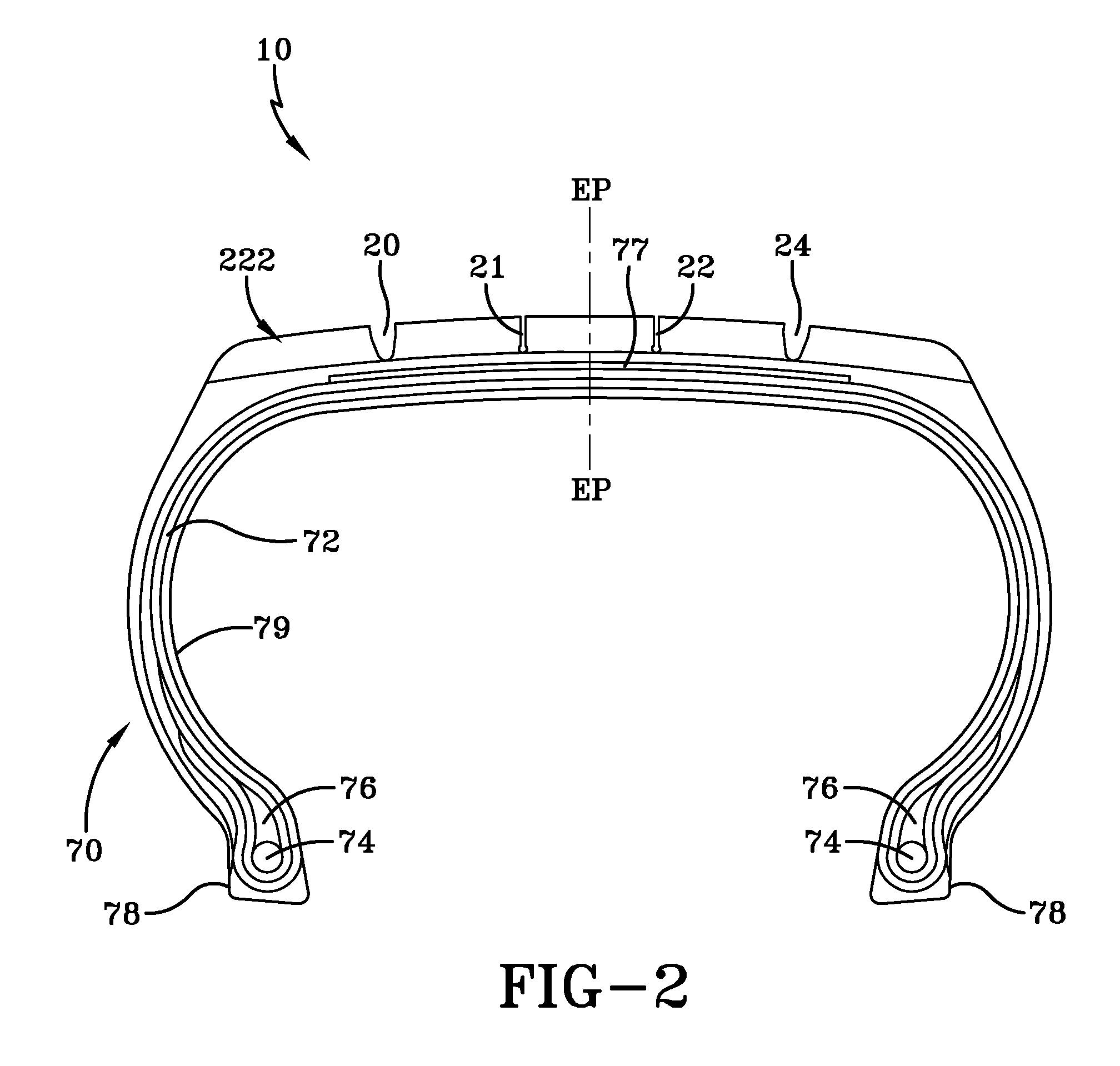Tread for a pneumatic tire
a pneumatic tire and tread technology, applied in the field of pneumatic tires, can solve the problems of loss of treadwear, poor treadwear of tires, and noisy noise of tires
- Summary
- Abstract
- Description
- Claims
- Application Information
AI Technical Summary
Benefits of technology
Problems solved by technology
Method used
Image
Examples
Embodiment Construction
[0094]With the reference to FIGS. 1-3, a pneumatic tire (10) having a tread (222) according to one example of the present invention is shown. The tread (222) may have an axis of rotation R and first and second lateral edges (14, 16). The tread (222), when used with the pneumatic tire (10), may employ a tire having a carcass (70) with one or more plies (72) reinforced by radially extending synthetic or metal cords and a pair of substantially inextensible bead cores (74), an apex (76) radially above the bead cores (74), and a belt reinforcing structure (77) radially outward of the plies (72). The tire (10) may have an air impervious halobutyl liner (79) and a pair of rubber chafers (78).
[0095]While the carcass (70) and other structures contribute much to the performance of the pneumatic tire (10), the example tread (222) of FIG. 1 may have four circumferentially continuous grooves (20, 21, 22, 24). Interposed between the two axially inner circumferentially continuous grooves (21, 22) ...
PUM
 Login to View More
Login to View More Abstract
Description
Claims
Application Information
 Login to View More
Login to View More - R&D
- Intellectual Property
- Life Sciences
- Materials
- Tech Scout
- Unparalleled Data Quality
- Higher Quality Content
- 60% Fewer Hallucinations
Browse by: Latest US Patents, China's latest patents, Technical Efficacy Thesaurus, Application Domain, Technology Topic, Popular Technical Reports.
© 2025 PatSnap. All rights reserved.Legal|Privacy policy|Modern Slavery Act Transparency Statement|Sitemap|About US| Contact US: help@patsnap.com



